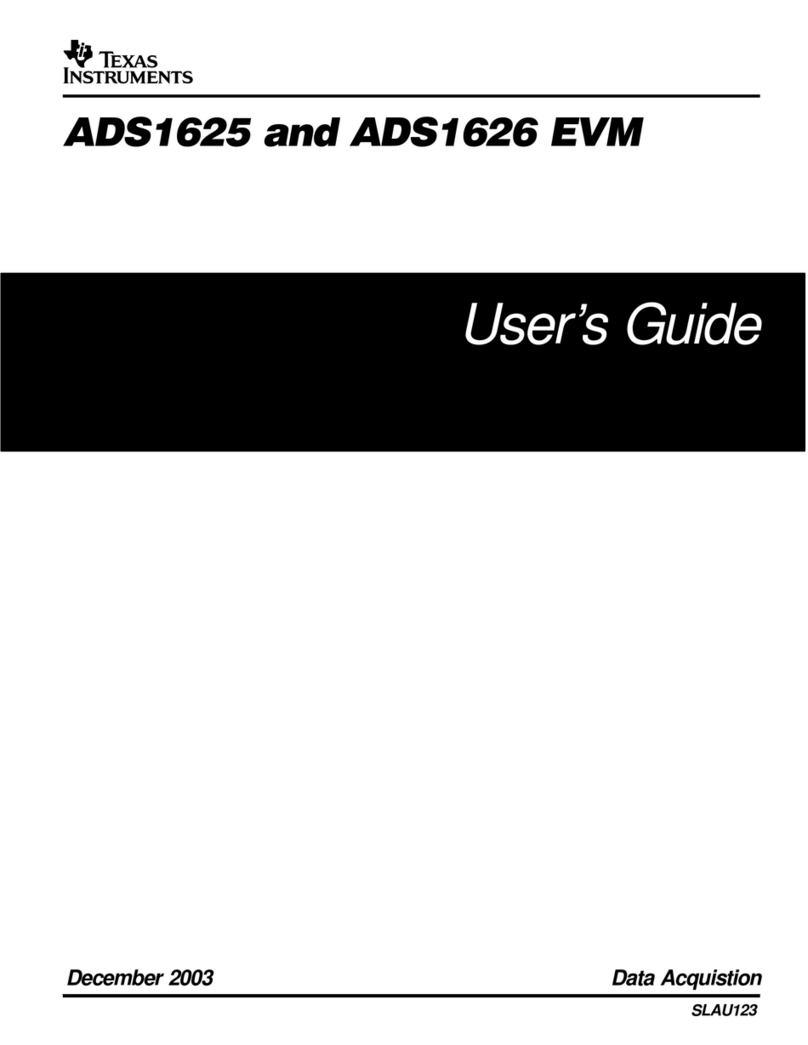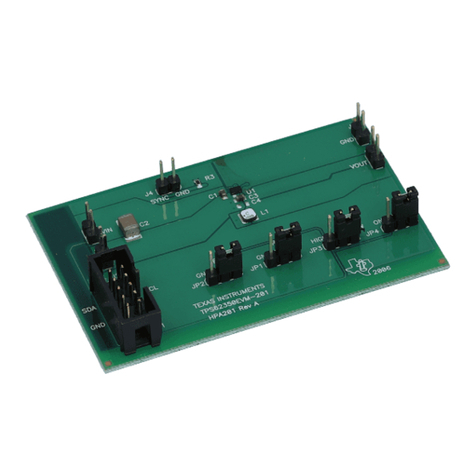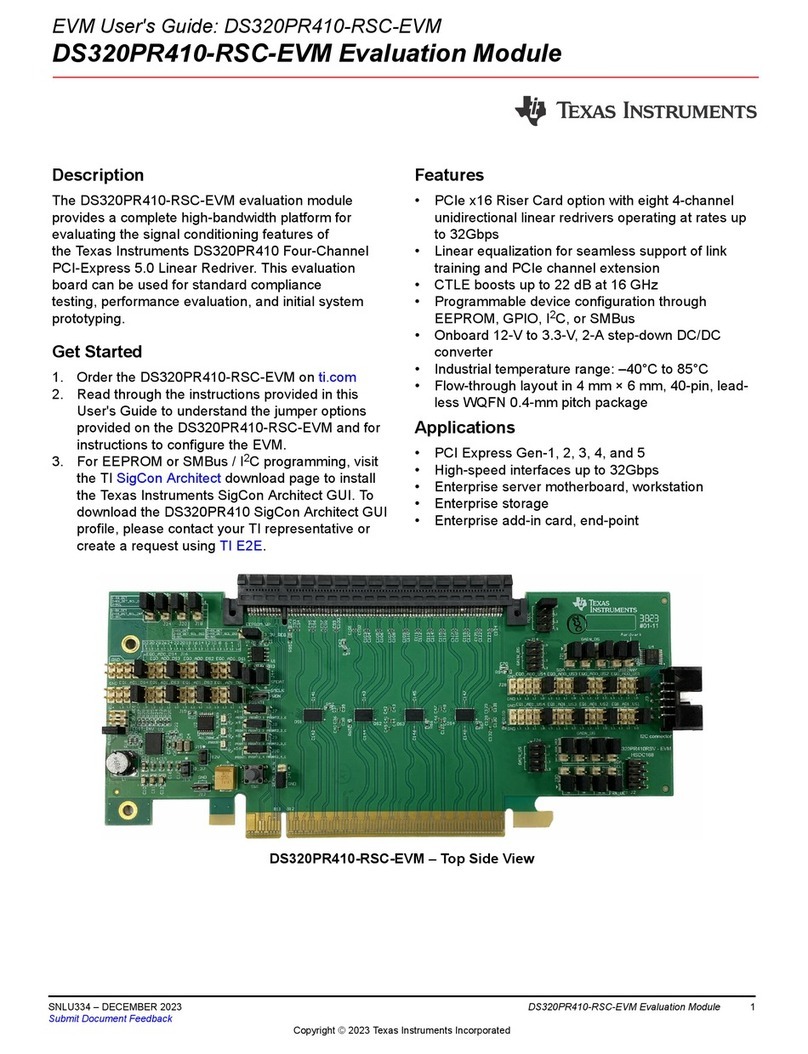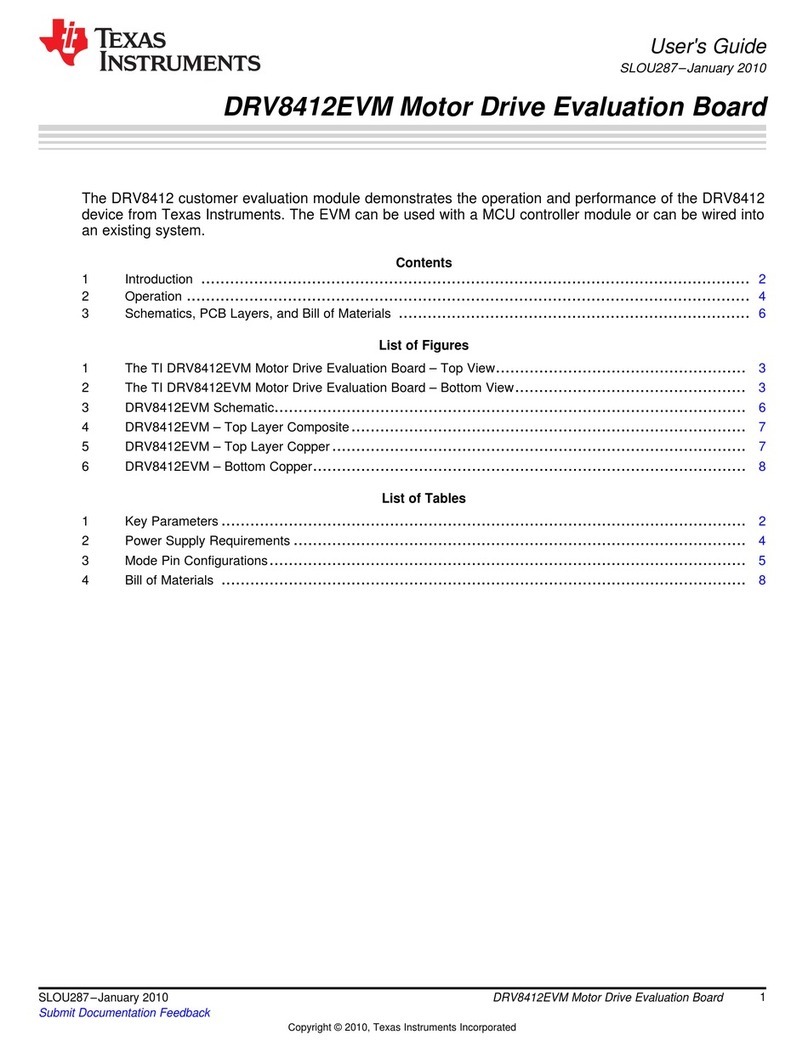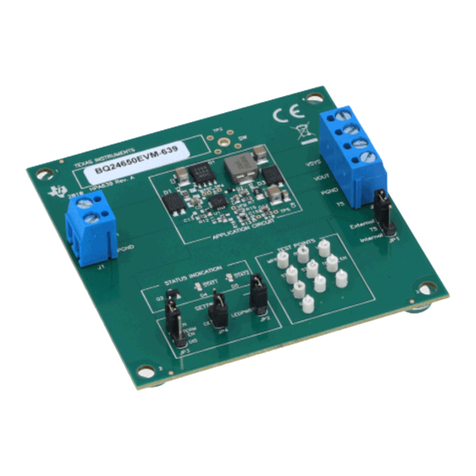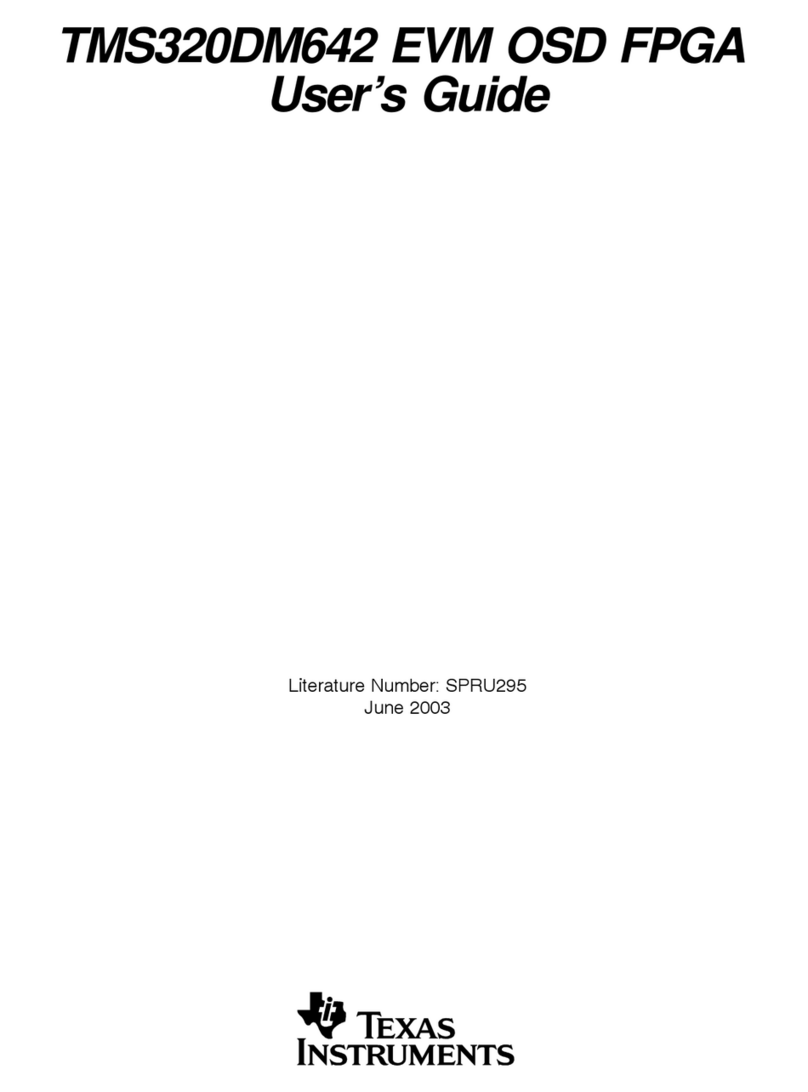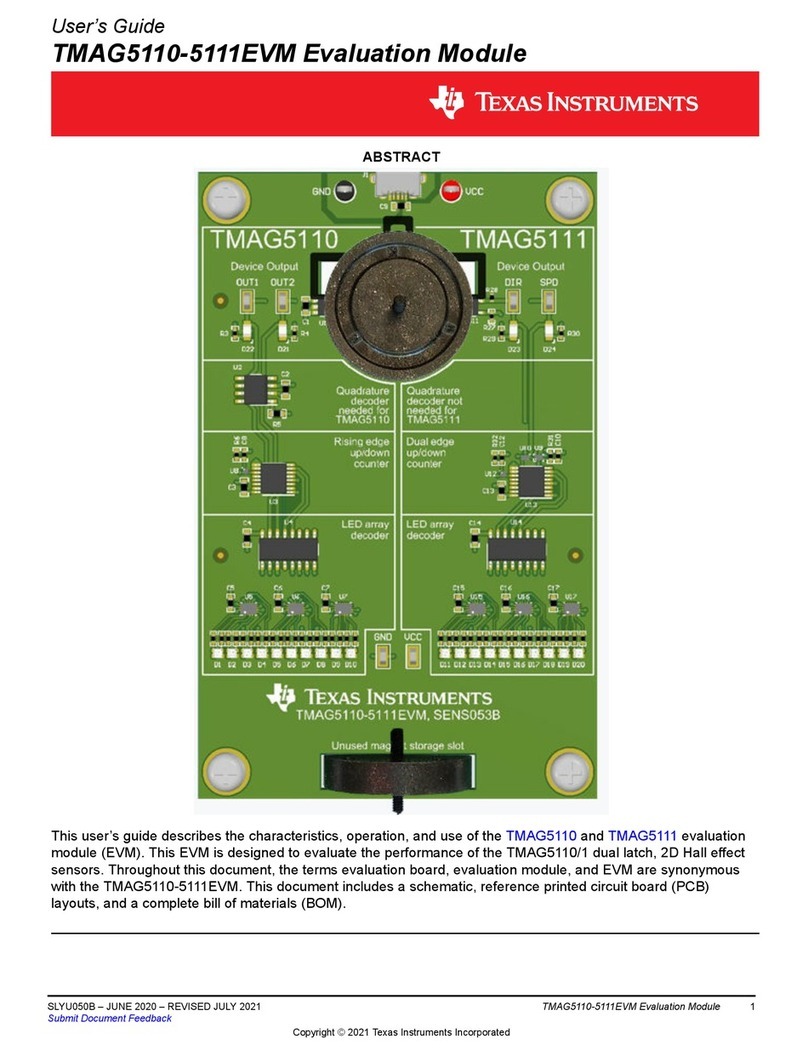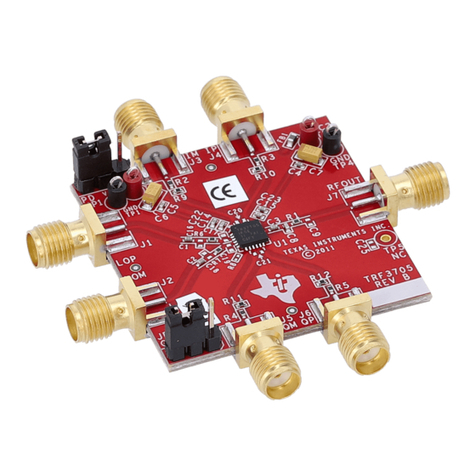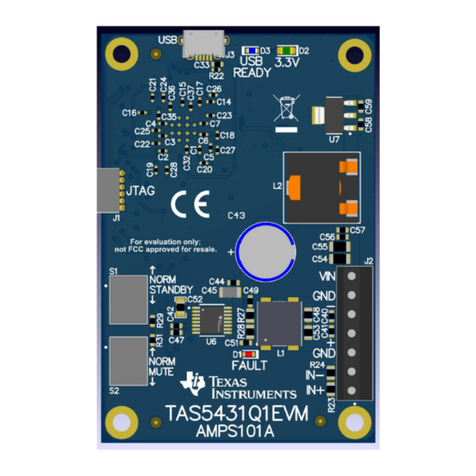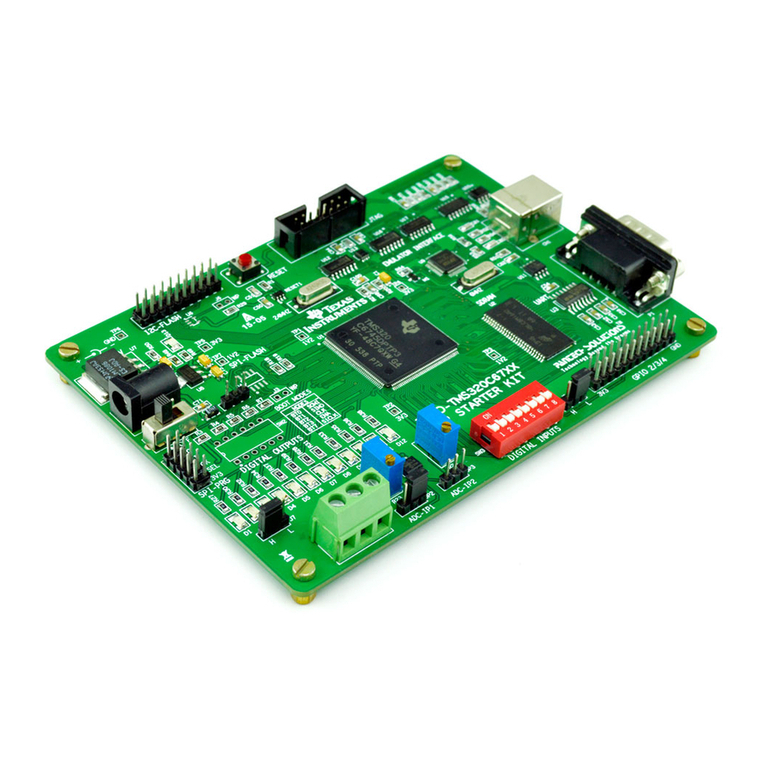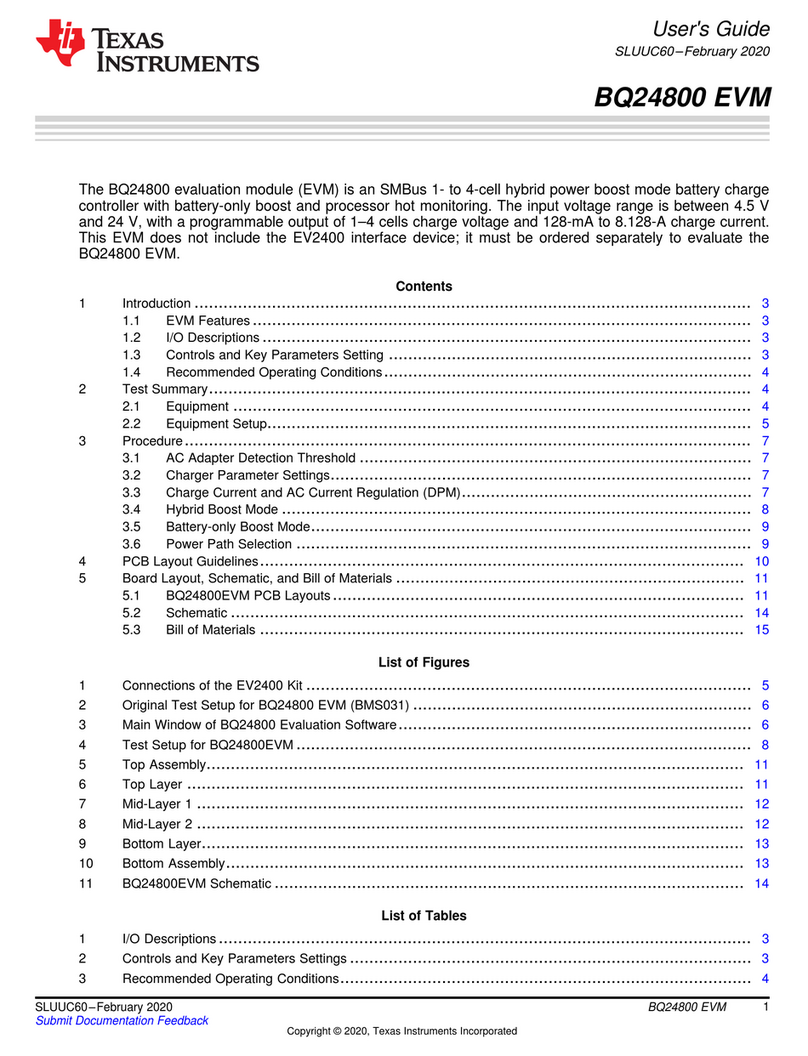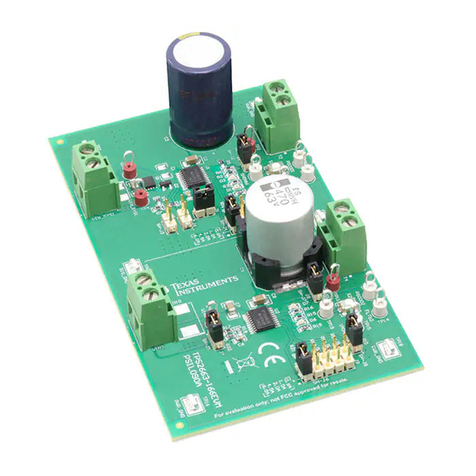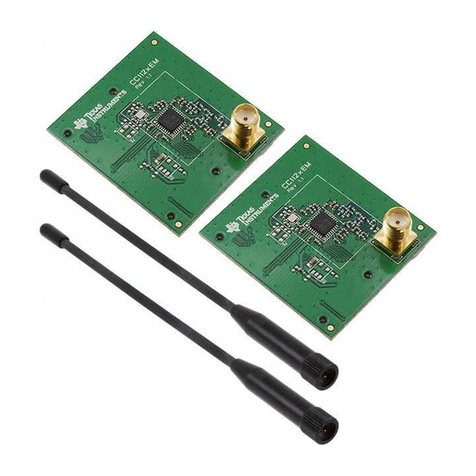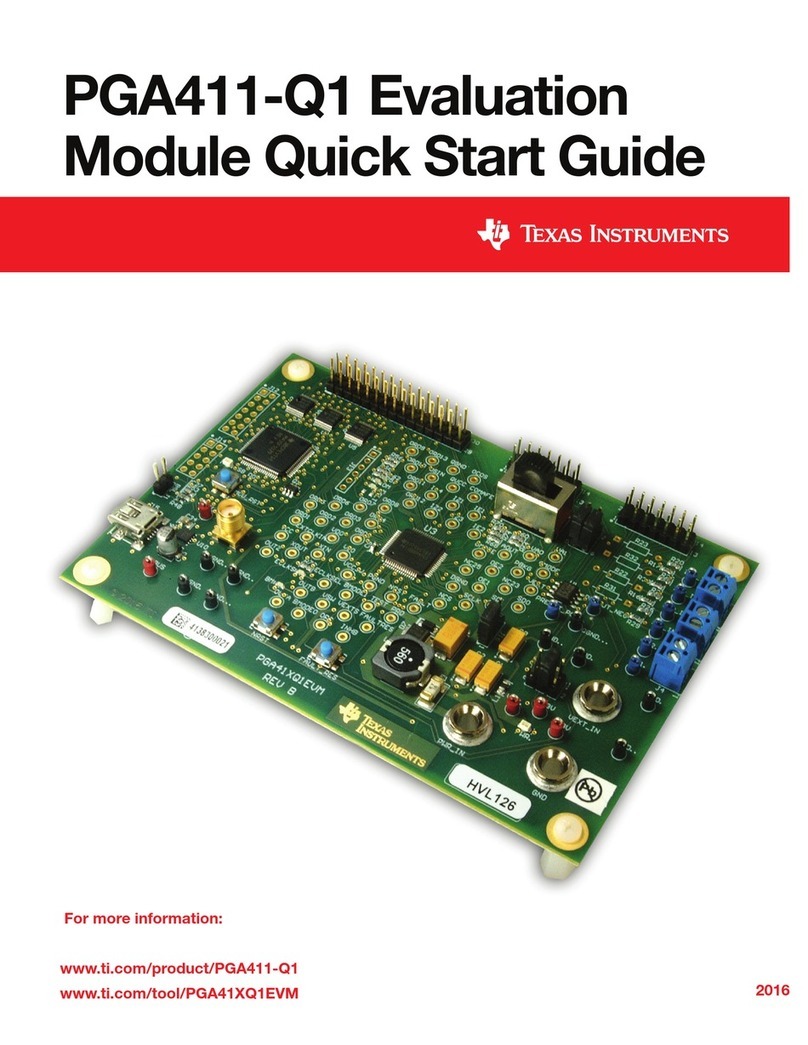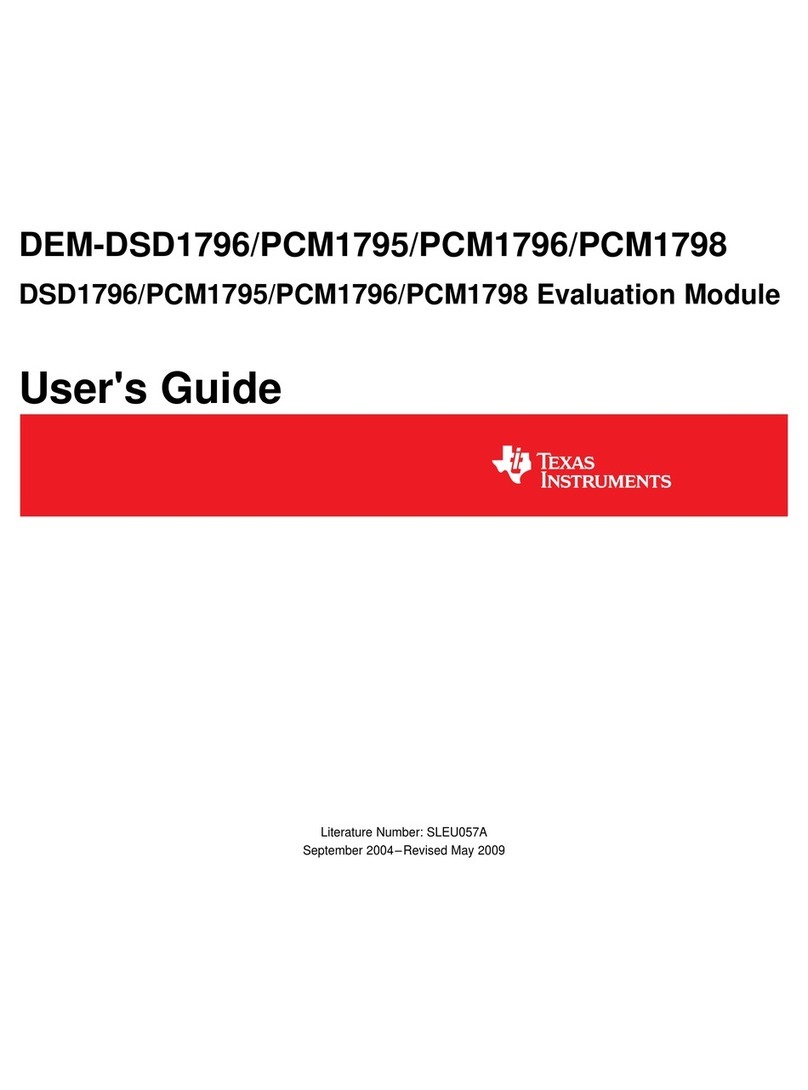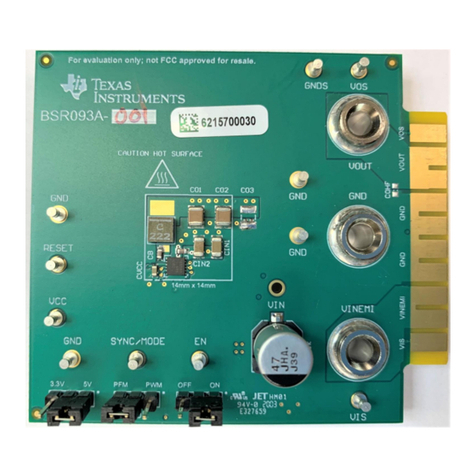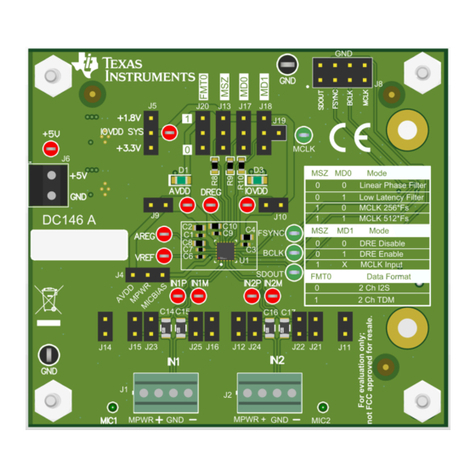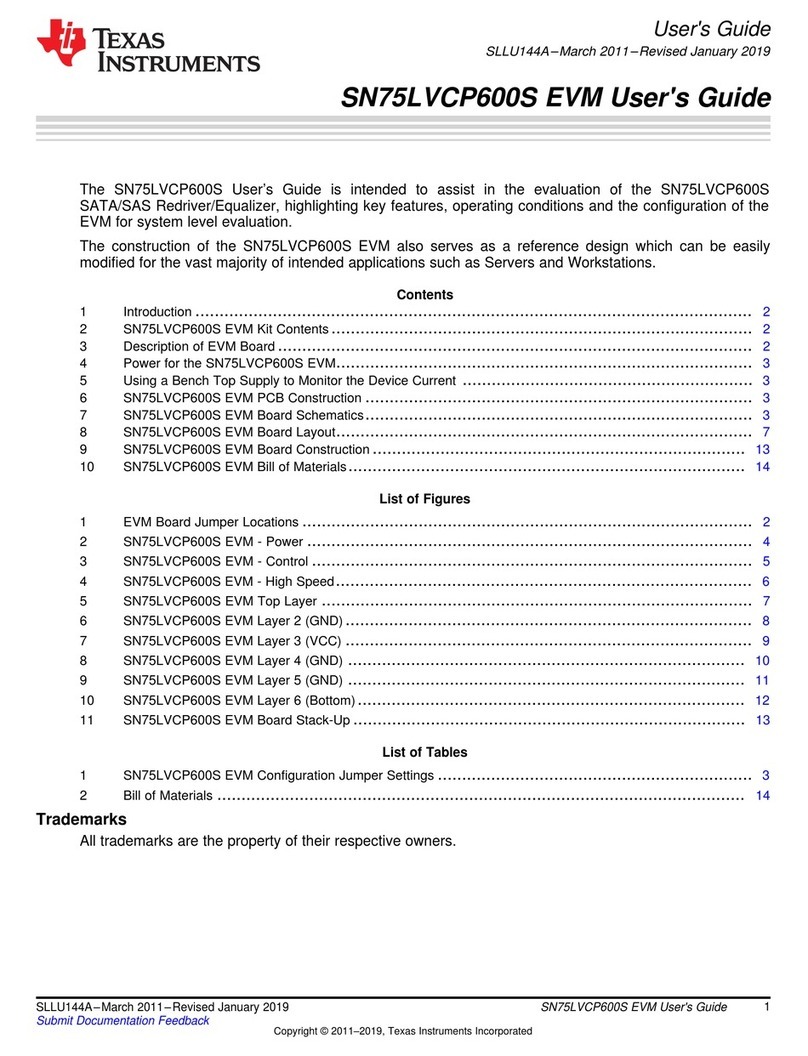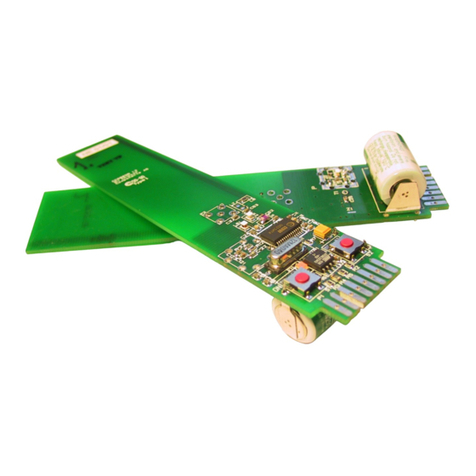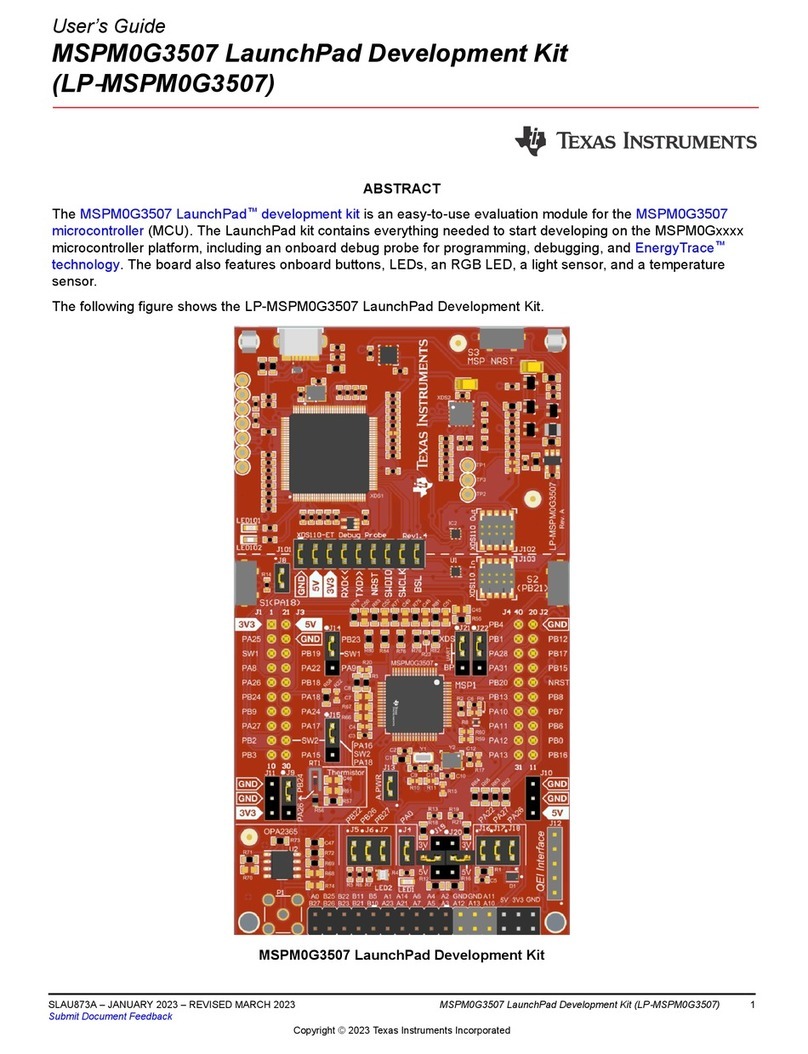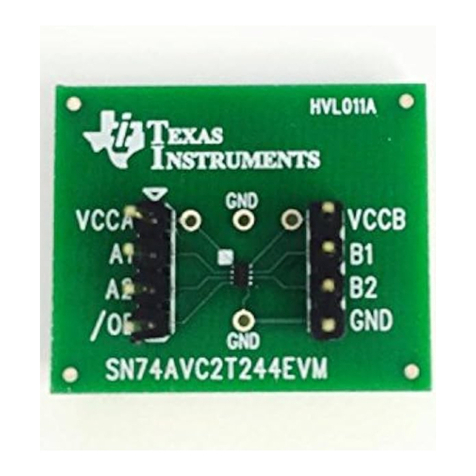
1.1 Requirements
1.1.1 Software
1.1.2 Host Computer Requirements
1.1.3 Power Supply Requirements
1.1.4 Printed-Circuit Board Assembly
1.1.5 USB Interface Adapter
1.2 Setup
1.2.1 Software Installation
Introduction
that both rows of LEDs are on at the same time. In reality, two FETs continuously switch the two banks ofLEDs in and out of the circuit. Therefore, only the red or green LEDs are connected to the IC at any giventime. Because this switching occurs hundreds of times per second, both rows of LEDs appear to bealways on. To accomplish multiplexing, the selected LED driver has to be reprogrammed every cycle sothat different patterns can be displayed on the two LED banks.
In both modes of operation, the software allows the user to enter the LED DOT correction and enableinformation for every LED. The software then communicates with the TLC5924EVM via an USB InterfaceAdapter. This interface board generates the individual data signals necessary to program theTLC5924EVM so that it properly drives the LEDs.
In order to operate this EVM, the following components must be connected and properly configured. Allcomponents, software, and connectors are supplied in the EVM except for the host computer and the twoDC power supplies.
Texas Instruments has provided the software necessary to evaluate this EVM. Check the TLC5924product folder on the TI Web site for the latest revision of the software.
•The host computer, or personal computer (PC), operating system must have either the Windows™ XPor Windows™ 2000 operating system installed.•Must have a USB port•Must have a minimum of 100 MB of free hard disk space for the EVM software installation•Must have a minimum of 256 MB of RAM to run the LED Frame Designer program
•DC power source capable of supplying a minimum of 5.5 V at 2 A•DC power source capable of supplying 3.3 V at 500 mA
The TLC5924EVM-186 PCB contains a TLC5923 IC configured in parallel with a TLC5924 IC.
The USB Interface Adapter
(1)
is the communications link between the PC and the EVM. One end of theinterface board connects to the PC with the supplied USB cable and the other end of the interface boardconnects to the EVM with the supplied SCSI-1 cable. When the user programs the LEDs to turn on or off,the PC sends the proper commands to the USB Interface Adapter. The USB Interface Adapter receivesthese USB commands, and its firmware converts the commands into the proper bit stream necessary tocontrol the LEDs on the EVM.(1)
"USBINTERFACEADAPTEREVM" is the orderable part number for the USB Interface Adapter.
The following discussion describe how to set up the EVM software and hardware.
To install the software, insert the enclosed CD into the CD-ROM drive of your computer. Browse thecontents of the CD for the Setup.exe file. Run this file to start the software installation process.
TLC5924EVM 2 SLVU187A – September 2006 – Revised June 2007Submit Documentation Feedback
